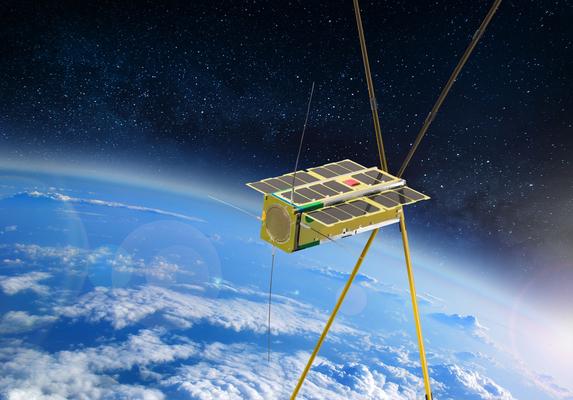UNSW Canberra has launched its first miniature satellite into orbit from the US, achieving another important milestone in growing Australia’s space sector.
The Buccaneer cube satellite, which was developed by a team of UNSW Canberra and Defence scientists, is now undergoing preliminary testing in orbit.
Launched from the Vandenberg Air Force Base in California, the Buccaneer has attained a stable orbit, with scientists and engineers able to successfully communicate with the spacecraft, obtaining telemetry.
Buccaneer, which is about the size of a shoe box, will help calibrate Australia’s groundbreaking Jindalee over the horizon radar as well as provide crucial data on predicting orbits of space objects including space “junk”.
Over the next few weeks and months the spacecraft will undergo operations to check and commission its systems before undertaking its risk mitigation activities and experiments in early 2018.
Minister for Defence Marise Payne said Buccaneer is designed to improve understanding of the outer atmosphere, in particular the ionosphere, which plays a key role in Australia’s world-leading Over-the-Horizon radar capability.
“The Government will invest significantly in space-related projects for Defence over the next two decades and it has made a commitment to establish a national space agency to drive Australia’s involvement in space.”
Buccaneer’s first mission is to test key technologies in preparation for the main mission in a few years when it will perform calibration activities for the Jindalee Over-the-Horizon Operational Radar Network.
UNSW Canberra Space director, Professor Russell Boyce said space junk collision avoidance in space is essential in order to safeguard the space based technologies upon which society depends.
“Our cubesats will play an important role in gathering data for this research, among other outcomes such as demonstrating space-based capability ranging from remote sensing to ultra-secure quantum communications.”
Buccaneer is one of five funded spacecraft and a further three in early development, at UNSW Canberra Space, a flagship program established with a $10m internal investment. The cube satellite is jointly owned and developed with the DST Group.
“With a team of over 40 space engineers, scientists and PhD students, we have the in-house ability and capacity to conceive, develop and fly innovative space missions with our own hands, supported by world class space research, rather than relying on others,” Boyce said. “It’s about building a sustainable domestic space capability with affordable methods of delivery.”
UNSW Canberra Rector, Professor Michael Frater said there was a growing understanding throughout government that it is critically important for Australia to operate in space, both from a security point of view and economically.
“We want Australia to have a really vibrant space industry,” Frater said. “It makes sense for Australia to play niche roles and benefit from the innovation, spin offs and export dollars that come with it.”



